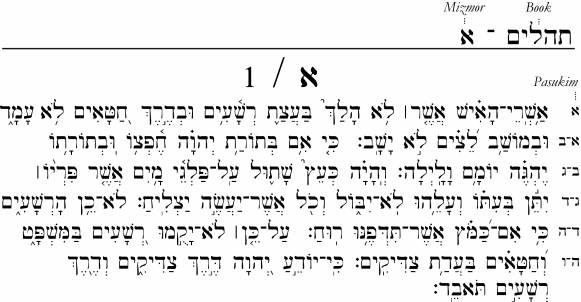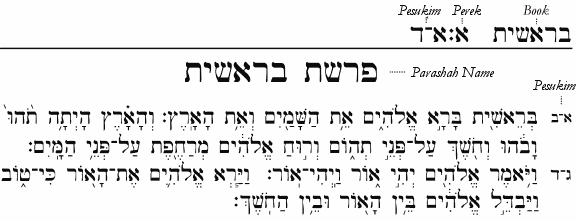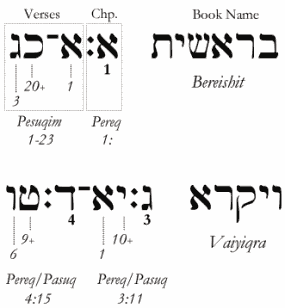|
|
 |
 |
|
Hebrew Letters used as Numbers
In some cases, especially in dates and in Bible references, Hebrew letters can function as numbers. For example, Aleph can stand for the number 1, Bet for 2, and so on. For a review of the numeric values for letters, click here.
I created the following matrix to help you easily identify numbers when expressed using Hebrew letters (download here):
|
 |
 |
|
Examples:
|
 |
|
|
|
Number
|
Combination
|
|
7
|
Zayin
|
|
19
|
Yod (10) and Tet (9)
|
|
93
|
Tsade (90) and Gimmel (3)
|
|
115
|
Qof (100), Tet (9) and Vav (6)
|
|
613
|
Tav (400), Resh (200), Yod (10), and Gimmel (3)
|
|
757
|
Tav (400), Shin (300), Nun (50), and Zayin (7)
|
|
|
|
 |
 |
|
To avoid confusion with words, letters meant as numbers are sometimes marked with geresh (single quote mark) if a single letter is used, or gerashayim (double quote mark) if more than one. These marks mean "not a word" and are also used for acronyms and abbreviations:

For example, the number 613 is sometimes referred to as "taryag," and the complete set of commandments is referred to as "taryag mitzvot," or the 613 commandments. This would be referred to as:

The Hebrew year
The Hebrew year begins on Rosh Hashanah (which occurs on the Gregorian calendar in September / October). When a Hebrew year is written using letters, you simply add the values of the letters. Often the year is written with an implied addition of 5,000, so, for instance, the year 5765 is written as 765 rather than 5765:

Chapters and Verses in the Tanakh
In some Jewish reference works, Hebrew letters are used to express numbers. For example, in modern editions of the Chumash (the Torah in codex form), chapters (perekim) and verses (pesukim) are indicated by means of Hebrew letters:
|
 |
|
|
 |
 |
 |
|
Section Exercises
- Understand how to convert numbers to Hebrew letters (and vice-versa). Use the matrix at the top of the page, if necessary.
- Write the current Hebrew year using Hebrew letters.
- Find a chumash or Tanakh and locate various passages. Write down the perek and pesukim for some of your favorite Scripture passages.
- Explain the use of the geresh / gerashayim. When is it used?
Provide an example or two.
- Download the Letters Matrix for reference.
|
|







